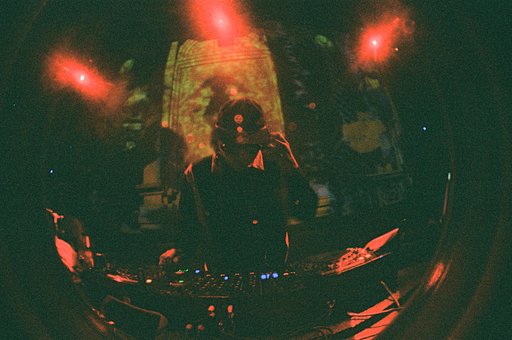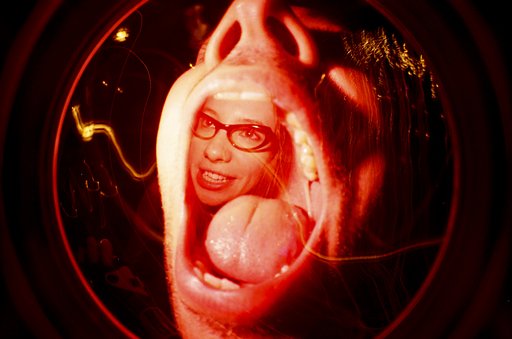Perfectly Exposed, No Batteries Required
18 131 Share TweetNo exposure meter, no batteries, no problem; make perfectly exposed photos with this handy DIY exposure calculator.

The top three questions that I’m most frequently asked by budding Lomographers are:
1. How do I load my film?
2. Where can I get my film developed?
3. And, drum roll, please; how do I set my exposure?
While the first two queries can take some serious “’splainin,‘” the third question is easier to answer than you might think. But more important than all of the technical steps involved in setting your camera’s exposure, the primary ingredient for a properly exposed frame of film is light. How of much it, or, how little of it, will determine your exposure.
So how does light affect my exposure? Ah, I see, a follow-up question. Well, light is the governing agent that causes the silver halides and colored dyes in film to undergo a chemical decomposition that forms the chiaroscuro (shades and tones) of the final image or print. Even more importantly, light is vital to us Lomographers because it also contributes to the wonderful light leaks that we cherish in many of our final photographs.
So, how can I control the amount of light that strikes my film? WOW, you are just full of questions today, aren’t you? Other than using tape (opaque electrician’s tape or duct/gaffer’s tape) to minimize the light leaks on your camera, there are two controls that govern the amount of light that strikes the film through the lens: shutter speed and aperture. Generally speaking, the values that you use for setting your camera’s shutter speed and aperture are calculated by a light meter.
Most light meters are built-into the camera (e.g., Belair X 6-12) and therefore, the setting of the shutter speed and aperture is invisible to the photographer. Just load your film, set the film speed (note: some film cameras will perform this task for you), and point-and-click. Under most lighting conditions, you’ll have a reasonably well exposed photograph. That is…unless the light meter’s battery dies or you don’t have a light meter.
Oh great, now what am I supposed to do? Fear not, a fun and clever little 70-year old trick will ensure that you will always have perfectly exposed photographs anywhere, any time and no batteries are required.
Granted, most (almost all) Lomography cameras don’t feature either a user-selectable shutter speed and/or aperture setting. Fun film cameras like the Zenit KM, Lubitel 2, and Horizon Perfekt are exceptions to the rest of Lomo crowd and sport these basic exposure controls. A semi-pro camera, like the Nikon FM10, has a separate knob (on the camera’s top deck) for “dialing” the shutter speed and a ring (around the lens barrel) for “twisting” the aperture. Before you can dial and twist, however, you must know which values to enter into these two controls.
- Just take the speed of your film (e.g., ISO value; Ilford HP5 is ISO 400) and convert it into a fractional reciprocal (e.g., Ilford HP5 ISO 400 becomes 1/400) and this is your shutter speed. [NOTE: you can use 1/500 on your camera without too much error.]
- Now set your aperture to f/16.
- Take your photograph.
And there you have it a pretty good exposure for an image in full, bright sunshine.
If you have other lighting conditions (e.g., some clouds, overcast, heavy overcast, etc.), just keep your shutter speed setting intact and open your aperture one stop for each type of environmental reduction in light.
Sure this little trick works well and fine in sunny to slightly inclement weather conditions, but what about lighting values that are all over the map? In this case, you need an exposure calculator. Luckily, Ilford Photo has you covered on this requirement, their device is free, and still no batteries are required.
Based on a exposure calculator designed by Richard Koolish, the Ilford Photo model can be “built” in three easy steps.
Parts:
- Ilford Photo Pinhole Exposure Calculator
- Clear Contact Adhesive Covering
- Screw post or brad
Time:
- 30 minutes
Difficulty:
- Easy
Cost:
- $6

1. Download the Ilford Photo Pinhole Exposure Calculator from here:
Ilford Photo Pinhole Exposure Calculator
[This is a PDF that accompanies the Harman/Ilford TiTAN 8×10 Pinhole Camera.]
Print this calculator on a laser or inkjet printer.

2. Carefully apply two sheets of the clear contact adhesive covering to the front and back of the printed calculator. If you accidentally create an air bubble under the covering, puncture the bubble, and flatten out the hole.

3. Cut out the calculator’s three disks and join them together by following the assembly instructions that are printed in the calculator’s PDF. Secure the three disks together with the screw post or brad. Make sure that the disks can all three rotate freely.

Using this calculator is actually an extension of our little lighting exposure trick. In this case, however, just set the film speed (e.g., ISO) on the small gray disk so that it is visible through the slot in the white disk, rotate the pointer to the current lighting condition, and read the shutter speed and aperture from the large gray disk and the white disk, respectively.
And there you have it; a perfect exposure, no batteries required.
written by themindseye on 2013-06-06 #gear #tutorials #camera #tutorial #aperture #exposure #tipster #select-type-of-tipster #select-what-this-tipster-is-about #shutter-speed #pinhole-exposure-calculator
















18 Comments